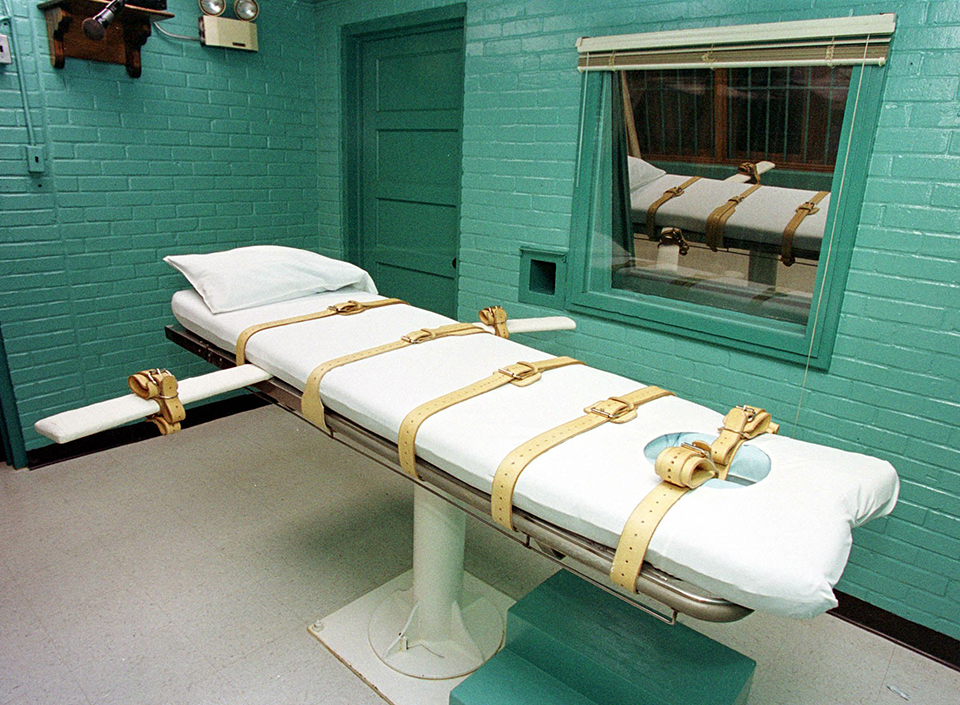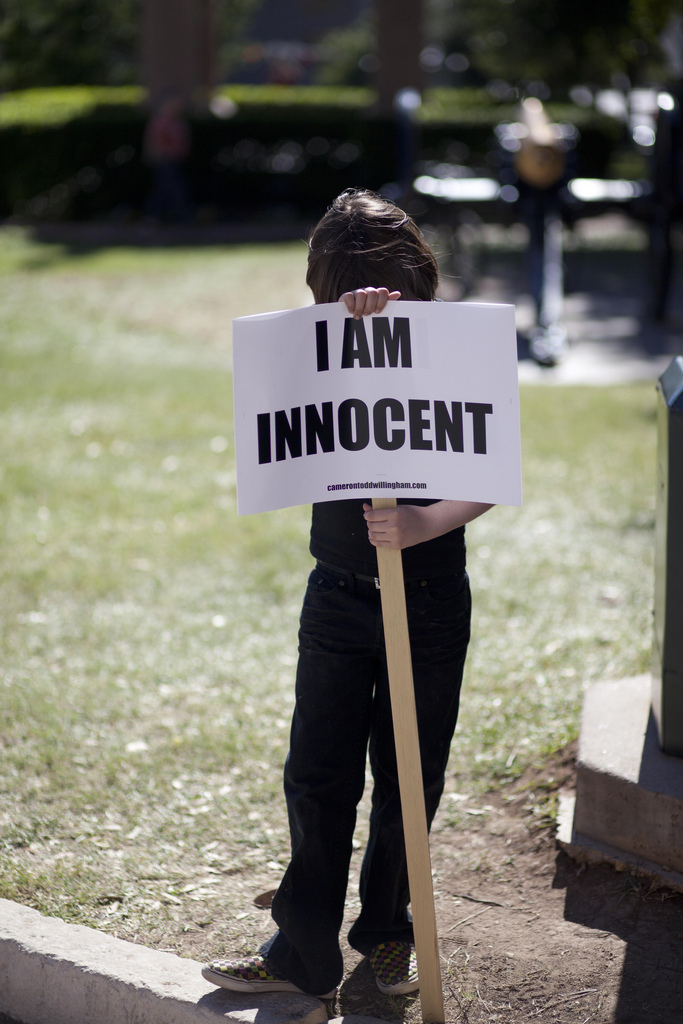 Jeff Wood is scheduled for execution in Texas on August 24, 2016 under the law of parties even though he did not kill anyone. We need to persuade the Texas governor and members of the Texas Board of Pardons and Paroles to commute Jeff’s death sentence. I have known Jeff’s family for many years. His sister Terri Been is leading the effort to #savejeffwood. She has testified to the Texas Legislature to ban executions under the Law of Parties and spoken out many times to save her brother from an unjust execution.
Jeff Wood is scheduled for execution in Texas on August 24, 2016 under the law of parties even though he did not kill anyone. We need to persuade the Texas governor and members of the Texas Board of Pardons and Paroles to commute Jeff’s death sentence. I have known Jeff’s family for many years. His sister Terri Been is leading the effort to #savejeffwood. She has testified to the Texas Legislature to ban executions under the Law of Parties and spoken out many times to save her brother from an unjust execution.
We created a petition to David G. Gutiérrez, Chair, Texas Board of Pardons and Paroles and Governor Greg Abbott, which says:
“We are petitioning to save Jeff Wood from unjustly being put to death by the state of Texas on August 24, 2016 for a murder he did not commit. Jeff was charged under the controversial Law of Parties. He was not the shooter in this crime, nor was he even in the building when the shooting took place. This unjust law states that even though a co-defendant may not have killed anyone, he can still face the death penalty, because of the actions of another person.
The actual shooter in this case, Daniel Reneau, has already been executed by the state of Texas.”
Four things to do:
1) Will you sign our petition? Click here to add your name.
2) You can also donate to the clemency campaign. We have about two months to move the public, the governor and the Board of Pardons and Paroles and we need about $1,000 for the clemency campaign.
3) Attend the rally July 23 at the Texas Governor’s Mansion in Austin.
4) Write a clemency letter to the Texas Board of Pardons and Paroles and to Governor Greg Abbott. Send the letters separately to each of their addresses.
David Gutiérrez, Presiding Officer Board of Pardons and Paroles, Executive Clemency Section 8610 Shoal Creek Boulevard, Austin, TX 78757
Governor Gregg Abbott, Office of the Governor, P.O. Box 12428, Austin, Texas 78711-2428
On July 23, we will hold a rally at the Texas Governor’s Mansion.
In 2009, the Texas House of Representatives passed a bill that would have banned executions of people convicted under the law of parties. The bill died in the Senate. It will be introduced again in the next legislative session in January 2017.
Jeff’s case is similar to Kenneth Foster’s, whose death sentence was commuted in 2007 by Governor Rick Perry after many people wrote clemency letters and more than 17,000 people signed a petition urging Perry to commute the death sentence, since Foster had not killed anyone. He was sentenced under the law of parties.
There have been only ten executions in the U.S. of people convicted under law of parties statutes. Five of those people were executed in Texas.
Terri Been wrote on Facebook:
I humbly ask you to help my family by taking a few minutes of your time to read a few facts regarding Jeff’s case and to sign his petition that we will be sending the governor! While you are on Jeff’s Web Page, I also ask that you take an extra minute or two to look at the other information we have in the how you can help section. For those of you who are familiar with Kenneth Foster’s case (which is very similar to Jeff’s case) it took their family over 17,000 messages to the Governor and the Board of Pardons and Paroles to get his sentence commuted to Life. This was accomplished by sending petitions, faxes, letters, and by making phone calls. I am eternally grateful for every single signature, but I need more. I need calls, letters and faxes to go along with the petition signatures.
I humbly ask that you help my family. Jeff is my baby brother and he did not kill anybody! Please ask yourselves what you would do if you were in my situation. What lengths would you go to if this was your family member?
Short case summary: At approximately 6:00 a.m. on Jan. 2, 1996, while Wood waited outside, Reneau entered the gas station with a gun and pointed it at Kris Keeran, the clerk standing behind the counter. Reneau ordered him to a back room. When he did not move quickly enough, Reneau fired one shot with a 22 caliber handgun that struck Keeran between the eyes. Death was almost instantaneous. Proceeding with the robbery, Reneau went into the back office and took a safe. When hearing the shot, Wood got out of the car to see what was going on. He walked by the door and looked through the glass. Then he went inside, and he looked over the counter and ran to the back, where Reneau was. Wood was then ordered, at gun point by Reneau, to get the surveillance video and to drive the getaway-car.
Tison v. Arizona, 481 U.S. 137 (1987), is a United States Supreme Court case in which the Court applied the proportionality principle to conclude that the death penalty was an appropriate punishment for a felony murderer who was a major participant in the underlying felony and exhibited a reckless indifference to human life.
If it goes to the Court again in the Wood case, they should be asked to find that enough change has occurred in public opinion since 1987 that there is now a national consensus that the death penalty should be banned in law of parties cases.












